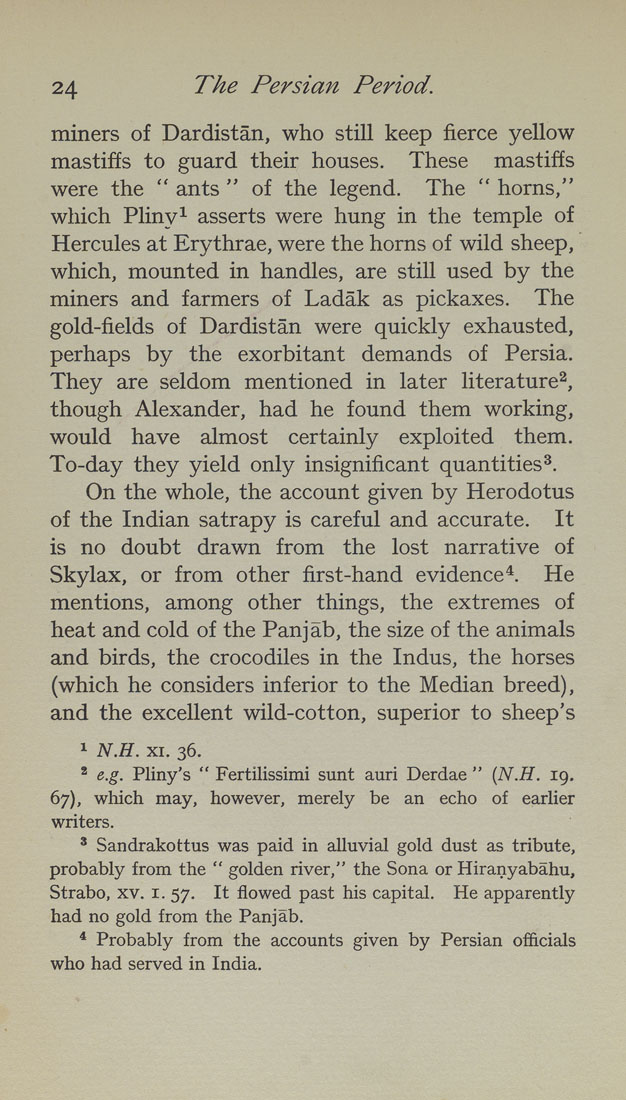24 The Persian Period.
miners of Dardistan, who still keep fierce yellow
mastiffs to guard their houses. These mastiffs
were the " ants " of the legend. The " horns,"
which Pliny ^ asserts were hung in the temple of
Hercules at Erythrae, were the horns of wild sheep,
which, mounted in handles, are still used by the
miners and farmers of Ladak as pickaxes. The
gold-fields of Dardistan were quickly exhausted,
perhaps by the exorbitant demands of Persia.
They are seldom mentioned in later literature^,
though Alexander, had he found them working,
would have almost certainly exploited them.
To-day they yield only insignificant quantities^.
On the whole, the account given by Herodotus
of the Indian satrapy is careful and accurate. It
is no doubt drawn from the lost narrative of
Skylax, or from other first-hand evidence*. He
mentions, among other things, the extremes of
heat and cold of the Panjab, the size of the animals
and birds, the crocodiles in the Indus, the horses
(which he considers inferior to the Median breed),
and the excellent wild-cotton, superior to sheep's
1 N.H. XI. 36.
* e.g. Pliny's " Fertilissimi sunt auri Derdae " (A^,ff, 19.
67), which may, however, merely be an echo of earlier
writers,
^ Sandrakottus was paid in alluvial gold dust as tribute,
probably from the " golden river," the Sona or Hiranyabahu,
Strabo, xv, i. 57, It flowed past his capital. He apparently
had no gold from the Panjab,
* Probably from the accounts given by Persian ofiicials
who had served in India.
|








